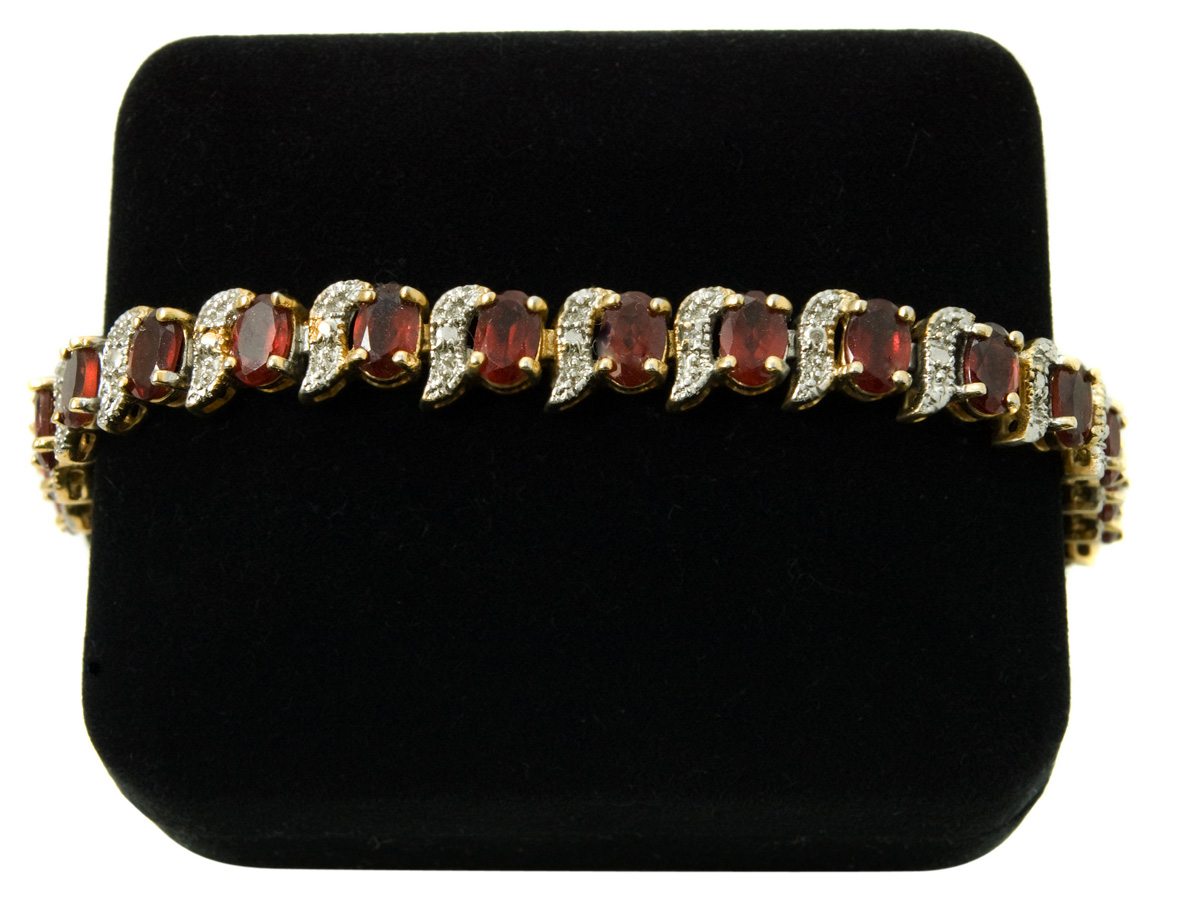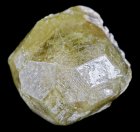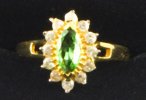Hessonite Garnet: It occur in a very wide range of colors, from colorless right through to black, but derive their name from the first specimen ever found, a distinctive gooseberry-green color. The orange-brown color of hessonite grossular garnet is due to manganese and iron inclusions. It has swirls of inclusions, giving it a treacly appearance.
The best hessonite garnets are found in Sri Lanka in metamorphic rocks, or gem gravels and sands. In Madagascar hessonite is often referred to as cinnamon stone. Other localities include Brazil, Canada, and Siberia (Russia), as well as Maine, California, and New Hampshire in the USA.
Both the Ancient Greeks and Romans made cameos, intaglios, and cabochons from hessonite, and faceted stones for jewelry.
Green Grossular Garnet: There are two varieties of green grossular: one is found as transparent crystals, the other is massive. Massive green grossular from South Africa is called Transvaal jade, after its main locality and because it resembles jade. It may contain black specks of the mineral magnetite. Since the 1960s a transparent, green grossular garnet, named tsavorite, has been mined in Kenya. Massive green grossular is used as a decorative stone; tsavorite is faceted as a gem.
Found in Canada, Sri Lanka, Pakistan, the former USSR, Tanzania, South Africa, and USA. Kenya is the main source for tsavorite.
The name “grossular” is derived from the botanical name of the gooseberry, R. grossularia. Massive grossular garnet of a gooseberry-green color was first discovered in the former USSR. Since then it has also been found in Hungary and Italy.
Pink Grossular Garnet: Pure grossular garnet is colorless, but impurities incorporated during its formation cause a wide range of colors. The pink variety results from the presence of iron.
Pink grossular is found in Mexico, usually as a massive form in metamorphic rocks. Crystals are rare. It also occurs in South Africa. Pinkish grossular from Mexico may be known as rosolite.






























Leave a Reply
You must be logged in to post a comment.